Last updated on April 10, 2024
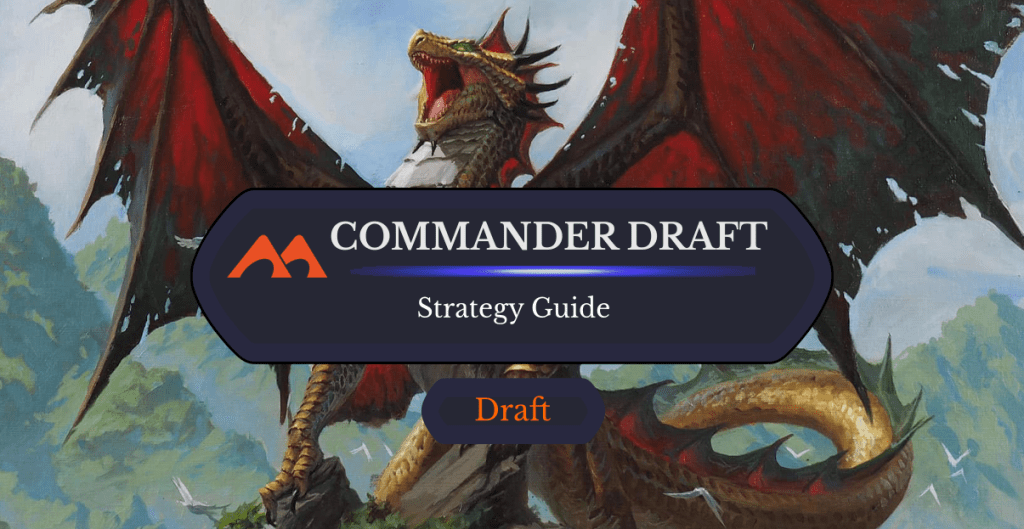
Ancient Bronze Dragon | Illustration by Johan Grenier
Greetings planeswalkers! Today’s article covers the art of Commander drafting, just in time to help you with Commander Masters!
I’ll examine some key differences between normal drafting and Commander drafting and go over some general strategies for the latter.
Ready? Let’s get into it!
Commander Draft Rules
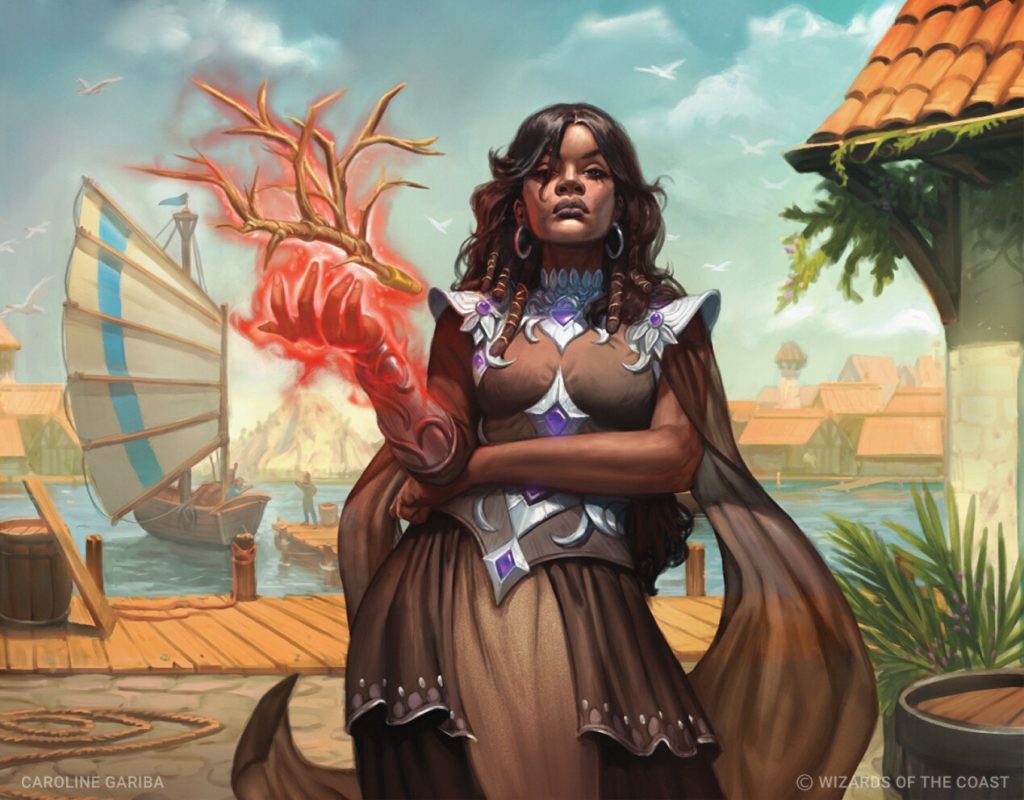
Dynaheir, Invoker Adept | Illustration by Caroline Gariba
Commander drafting first became a thing in November 2020 with the release of Commander Legends. WotC had to make changes to many normal things in Draft to make the experience of drafting a Commander deck a little easier:
- NEW: Any two mono- or zero-color legends can be partners. This rule is only present in Commander masters draft. You cannot pair two, two-color legendaries together, or a two-color legendary with a mono-color legendary. You can only pair mono-color and colorless legendaries together as partners.
- Commander draft boosters have 20 cards in each pack compared to the normal 15 (one of which is an irrelevant basic land).
- Rather than picking one card per pack, you pick two cards at once.
- The reason for this that’s mentioned on prerelease materials is to “ensure coherency of decks, as players will need to conform to the color identities of their eventual commanders, and for speed.”
- You draft a 60-card Commander deck, rather than a normal 40-card deck.
- You want to pick at least one commander (more on that later) and can only include cards in the color identity of your commander(s).
- Past Commander Draft sets have mostly been focused on 2C gameplay, with a handful of 3C commanders at rare and no real support for mono-color strategies.
- The partner and choose a background mechanics featured prominently in past sets to make choosing your commander(s) easier.
- Since we already know that The Prismatic Piper appears in Commander Masters, expect the partner mechanic to return as well.
- There haven’t been any 4- or 5-color commanders in past Commander Draft sets.
- In the event you weren’t able to have a commander, you can play The Prismatic Piper even if you didn’t draft it.
Commander Draft Gameplay Rules
- After you draft and build your deck, you split off from your Draft pod into a 4-player pod and battle it out.
- Each player starts with 40 life, not the usual 20.
- Commander damage is a thing, just like in regular EDH. Any player who takes 21 or more damage from the same commander over the course of the game loses.
- There are no official alternative mulligan rules for Commander Draft.
- However, given that you’re only playing one game rather than best-of-three, consider giving everyone in your pod a free mulligan!
How Many Rounds Are There in Commander Draft?
After the draft is over, players split up into 4-player Commander pods. There is no specific number of rounds, but most game stores will do a normal 3-round draft. However, many games during the Baldur's Gate daft went on for far longer than a normal draft round would, so check with your LGS to see how many rounds will be sanctioned.
How Many Lands Do You Need for a Commander Draft?
Since Commander drafts leave you with a 60-card deck rather than 40, you’re going to want to run between 25 to 28 lands, depending on your mana curve and strategy. These land counts are above average because games generally go long (10+ turns), so hitting all your land drops is important. I tend to skimp on lands only when I have a critical mass of mana rocks (cards like Mind Stone, Arcane Signet, Moss Diamond, etc.).
Commander Draft Strategy
So how do you approach this strange Draft format? Here’s a rough roadmap of how past Commander Draft sets have played out to tide you over until our Commander Masters Ultimate Guide is ready.
2-Color Archetypes
Past Commander Draft sets have been laid out like a normal Draft set, featuring 10 2-color signpost uncommons that showcase what each color pair should be doing. These give you a taste of themes represented in many commons in the set that you can build a deck around.
Below are the signposts and their corresponding archetypes from Commander Legends and Commander Legends: Battle for Baldur’s Gate. I have the 2C archetypes from Commander Masters here as well, but they won’t have their corresponding uncommons until they’ve been spoiled.
Commander Masters
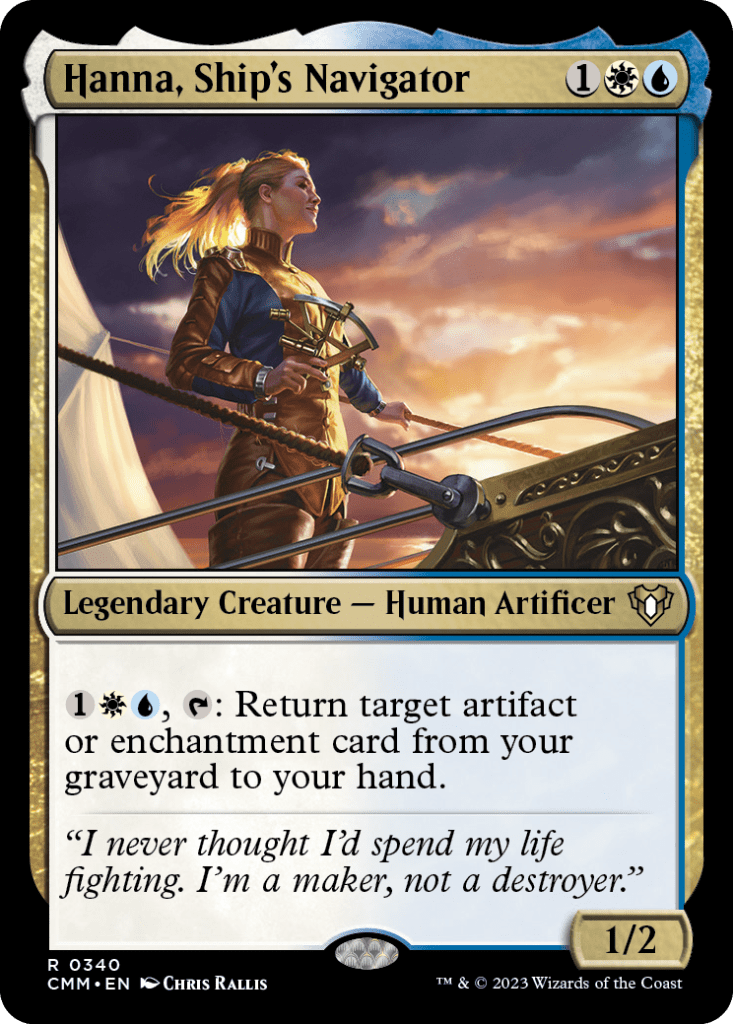
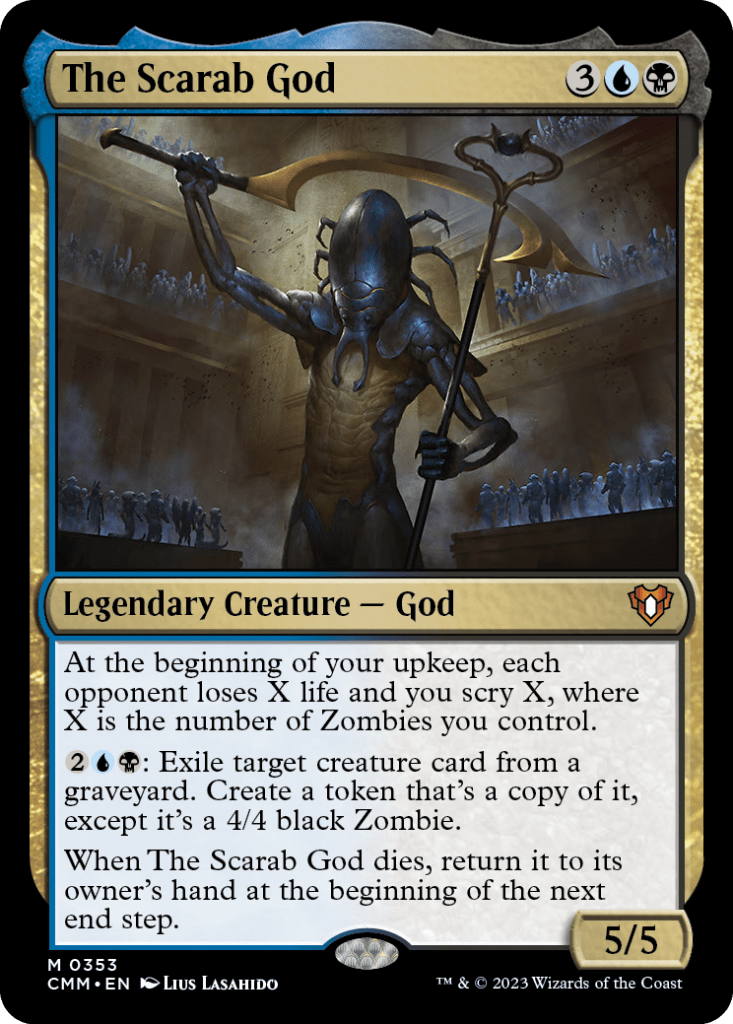
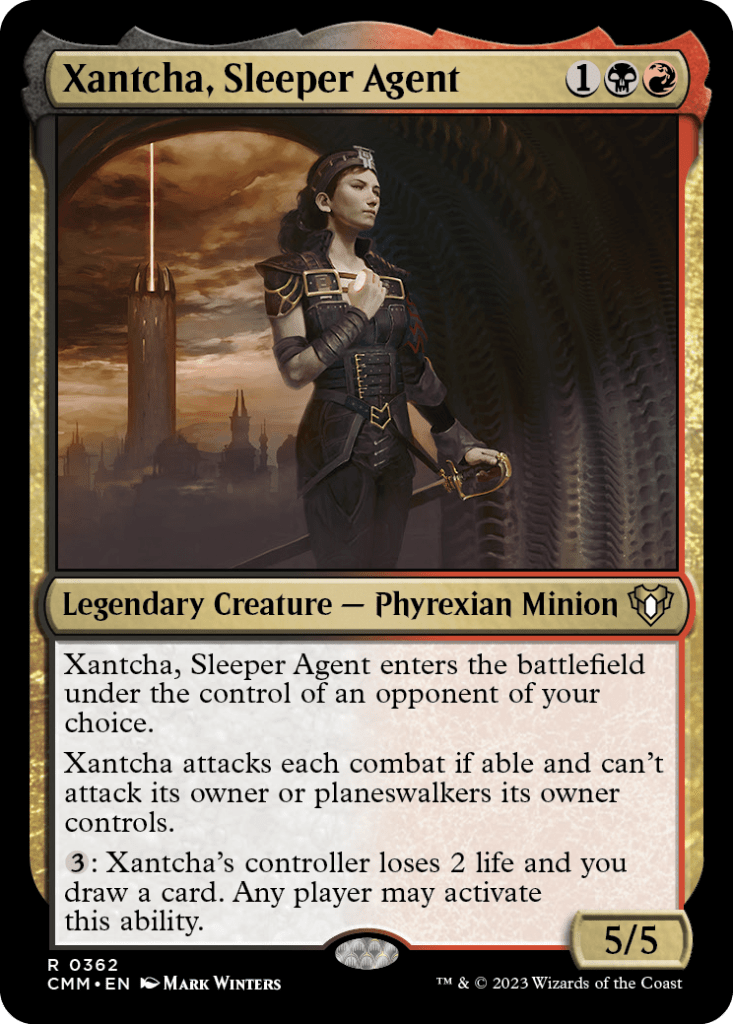

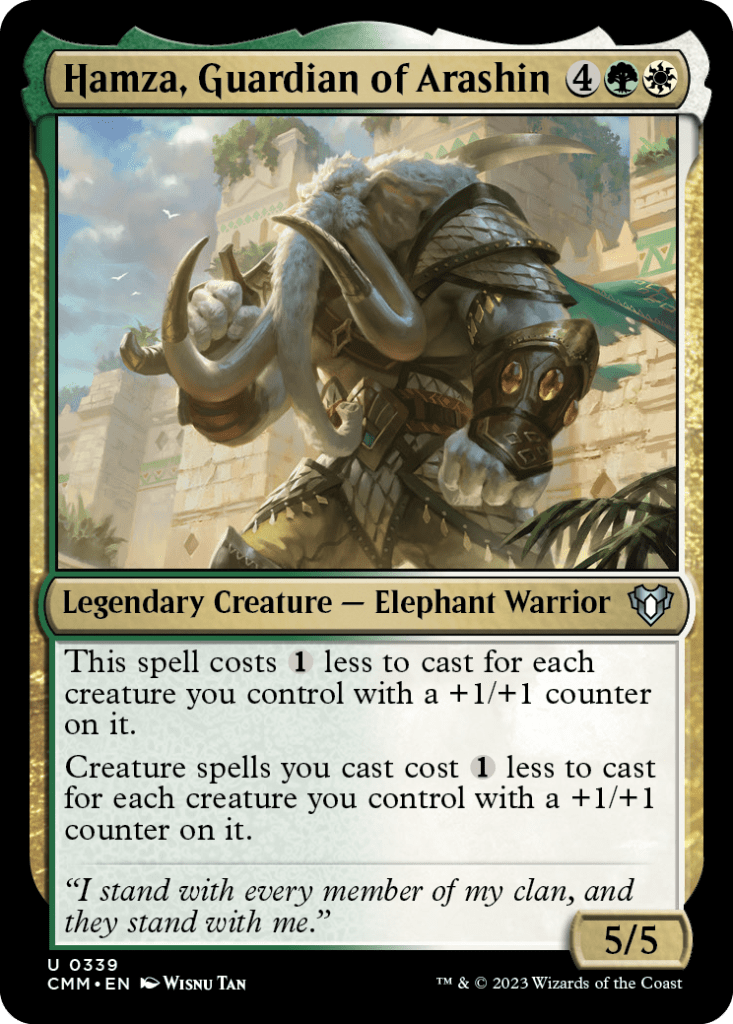

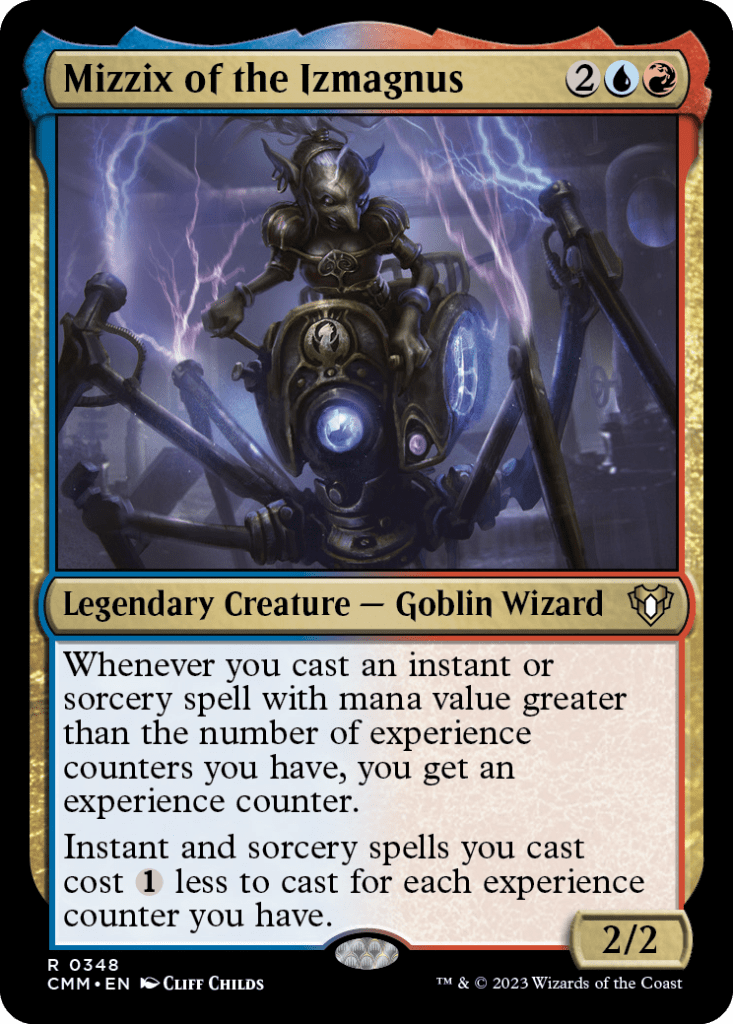

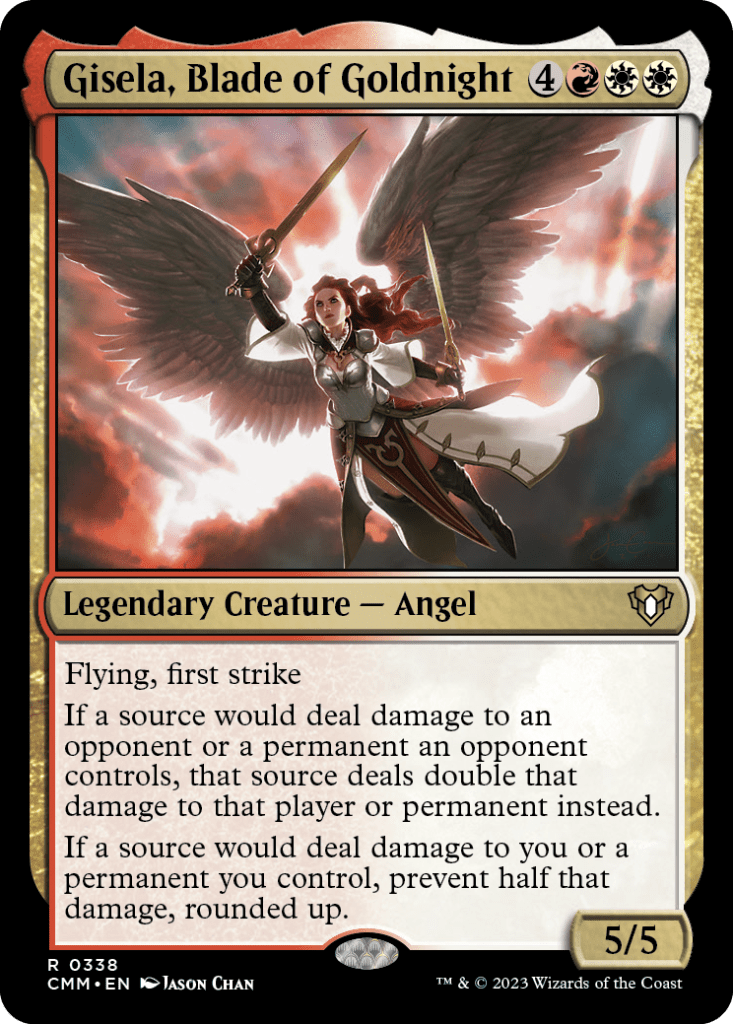

- Hanna, Ship's Navigator: Azorius Artifacts
- The Scarab God: Dimir Reanimator
- Xantcha, Sleeper Agent: Rakdos Sacrifice/combo
- Zilortha, Strength Incarnate: Gruul Power Matters
- Hamza, Guardian of Arashin: Selesnya Counters/go wide
- Teysa Karlov: Orzhov Sacrifice tokens
- Mizzix of the Izmagnus: Izzet Spells
- Meren of Clan Nel Toth: Golgari Tokens
- Gisela, Blade of Goldnight: Boros Equipment
- Experiment Kraj: Simic Ramp
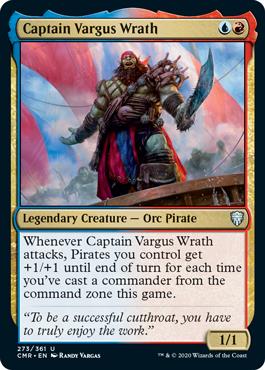
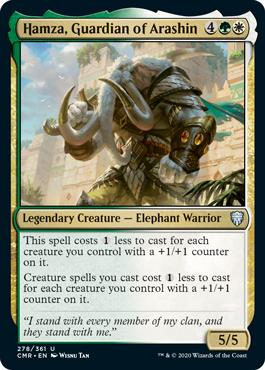
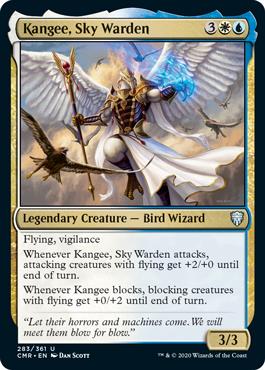

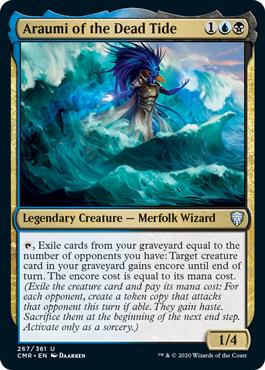
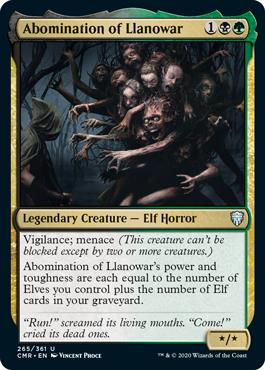




- Captain Vargus Wrath: Izzet Pirates
- Hamza, Guardian of Arashin: Selesnya Counters
- Kangee, Sky Warden: Azorius Skies
- Reyav, Master Smith: Boros Voltron
- Araumi of the Dead Tide: Dimir Encore
- Abomination of Llanowar: Golgari Elves
- Juri, Master of the Revue: Rakdos Sac
- Imoti, Celebrant of Bounty: Simic Ramp
- Thalisse, Reverent Medium: Orzhov Tokens
- Tuya Bearclaw: Gruul Stompy
Battle for Baldur's Gate
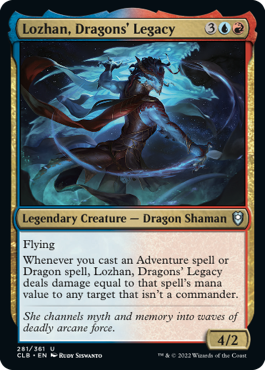

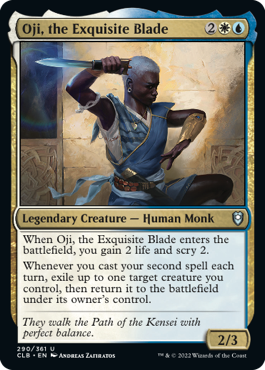
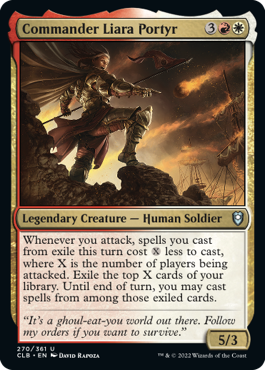
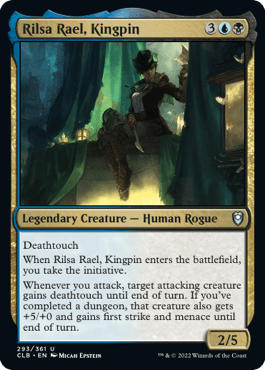
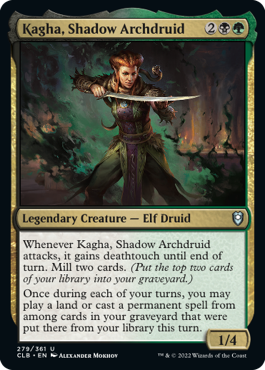
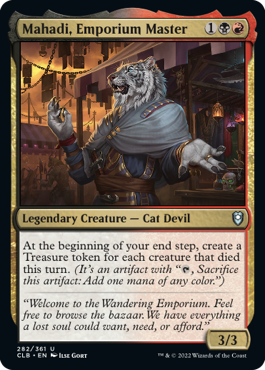


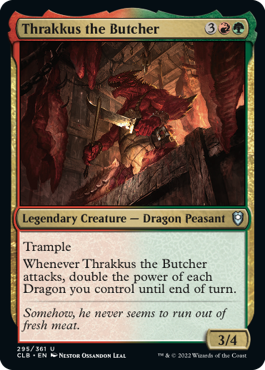
- Lozhan, Dragons' Legacy: Izzet Dragons/Adventures
- Cadira, Caller of the Small: Selesnya Tokens
- Oji, the Exquisite Blade: Azorius Flicker
- Commander Liara Portyr: Boros Myriad
- Rilsa Rael, Kingpin: Dimir Initiative
- Kagha, Shadow Archdruid: Golgari Self-mill
- Mahadi, Emporium Master: Rakdos Treasure
- Korlessa, Scale Singer: Simic Dragons
- Minthara, Merciless Soul: Orzhov Sacrifice
- Thrakkus the Butcher: Gruul Dragons
Overlap
One concept worth focusing on to help your drafting endeavors is overlap, or the degree to which cards for one archetype can be useful in other archetypes. This gives you more mobility in Draft and extra measures to evaluate card strength. The best commons in these sets tend to be valuable in multiple archetypes.
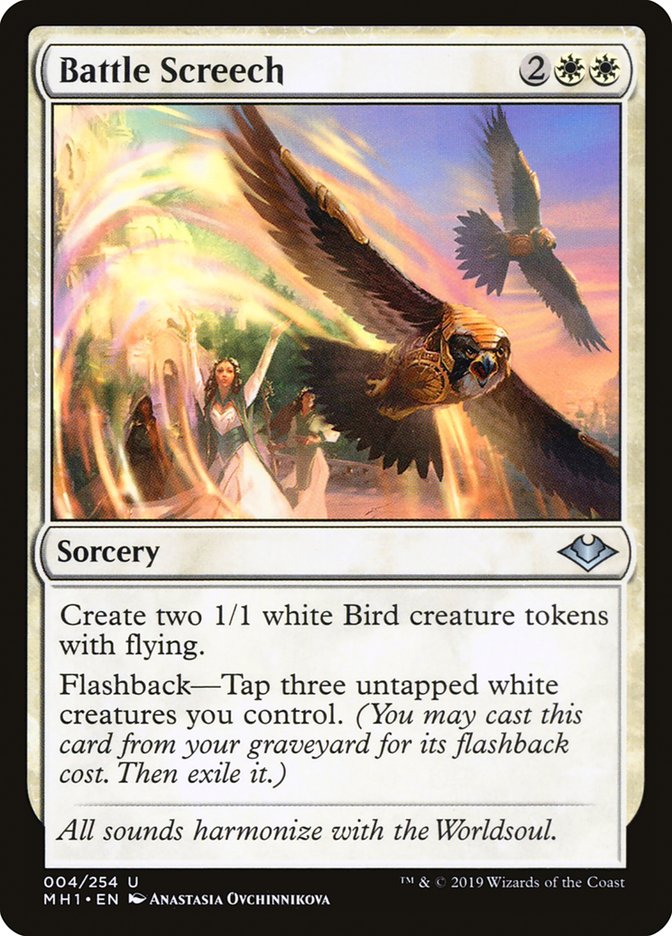
While we don't have the full picture of Commander Masters just yet, Battle Screech is an overpowered card that seems ideal for ¾ of the set’s white archetypes. 4 birds from one card is ideal for both going wide () and sacrificing tokens (). 1/1 fliers also tend to excel with equipment for .
Partners and Backgrounds
There are two ways to end up in a 2C pair in a Commander Draft format:
- Pick a 2C legend for whatever 2Cs you’re interested in playing.
- Start with a mono-colored partner/a couple cards in one color, then solidify into a second color later with a different partner (or The Prismatic Piper) if you have a bad draft. If you're specifically drafting Commander Masters, you can pair any two mono-color commanders up as partners, regardless of whether or not they have the partner mechanic.
While it’s hard to speculate yet on how partners will play out in Commander Masters, past sets included many different partner/background cards. These enabled diverse, strategic pairings that were best aimed towards internal synergy and synergy with the set at large (for example Malcolm, Keen-Eyed Navigator + Breeches, Brazen Plunderer for an ideal pirate typal pair).
3-Color Commanders
As mentioned above, past Commander Draft sets have contained a couple of rare 3-color commanders. Each commander has a specific thing they want you to do, but you can expect great variance as to how rewarding each is and how much support there is for them in the format. To use two examples from Commander Legends: Battle for Baldur’s Gate, consider Gorion, Wise Mentor vs. Mazzy, Truesword Paladin.
Gorion Adventures was a well-supported deck with a diverse set of individually solid cards to draw from. The commander itself is also great and provides more than enough payoff to justify building a deck around. Mazzy, Truesword Paladin, on the other hand, suffers from being in a set with just five auras. While the card reads like an aggressive pants commander, the set had no real support for aggressive auras. Your only real option for building around it was to draft as many Shiny Impetus, Martial Impetus, and Predatory Impetus as possible.
To draft a 3C commander, you’ll basically do one of two things:
- Take it early (either pack1, pick1 or a few picks after) and build your entire draft around it.
- Adapt a 2C deck into a 3C one after getting it in the middle of pack 2 (start taking fixing highly as you’ll need it).
Otherwise, the opportunity cost of dropping a color for two new ones (or worse yet, two colors for three new ones) tends to be too high to bother with. Commander Draft sets don’t reward staying open to the extent that normal Draft sets do, so keep this in mind!
Commander Masters 3-Color Legends
We actually know the 3C legends in Commander Masters already! They are:
- Rafiq of the Many (exalted aggro)
- Yennett, Cryptic Sovereign (fat flying card draw engine that likes odd cards)
- Nekusar, the Mindrazer (passive dmg/wheel synergy)
- Sek'Kuar, Deathkeeper (sacrifice)
- Zacama, Primal Calamity (ramp/dinos)
- Queen Marchesa (monarch)
- Maelstrom Wanderer (ramp/cascade)
- Karador, Ghost Chieftain (self-mill/reanimator)
- Kykar, Wind's Fury (spellslinger/tokens)
- Sidisi, Brood Tyrant (self-mill)
I’m a big fan of all these cards and would be happy to p1p1 any of them! It remains to be seen how much synergy each will have with the set at large, but the individual power levels seem much higher than past sets which had more convoluted build-arounds.
How to Draft Commander Sets
There are some universal strategies that can be applied to the drafting process in either set. For starters, past Commander Masters Draft booster packs always contain these cards:
- 1 Legendary Rare or Mythic
- 1 Rare or Mythic
- 1 Traditional Foil (Any Rarity)
- 2 Legendary uncommons
- 3 Uncommons
- 11 Commons
- 1 Double-Sided Token
It’s impossible to have a p1p1 where you don’t have a legendary available, but that doesn’t mean you have to take it and force a deck around it. If you have a rough idea of what kind of archetypes you’re willing to play, you can start your draft by taking the two most powerful cards that fit that frame.
For instance, rather than committing to Teysa Karlov + Battle Screech, you could instead just take Battle Screech + Arcane Signet with an eye towards staying open. Premium colorless cards like Arcane Signet are pretty much always the best cards to open/take early.
On the other hand, you’re more than welcome to just P1P1 a commander you like to force a deck around it. You won’t have the best deck in your pod this way, but Commander Draft sets are overall less competitive than past Draft experiences. Focus on doing the things you like to do in Magic while building a coherent deck!
Reading a Draft
If that bit about “being less competitive” doesn’t appeal to you, read on. The nightmare in Commander Drafts is to be building an archetype deck to the left of someone doing the exact same thing. A lot of the narrower archetypes lean on a critical mass of certain card types and won’t branch out well.
If you’re interested in avoiding this scenario, you’ll need to learn how to read a Commander Draft pod. This is done fairly similarly to how it is in normal Drafts: late notable cards and tabling specific cards are signs that certain colors and archetypes aren’t valued. But special focus should be given to legends.
The simplest way to get the go-ahead to draft any 2C deck is to table its signpost or premium support cards. The same goes for 3C commanders; if you’re in a 4-player pod and get Zacama, Primal Calamity P1P7-8, feel free to slam it and every ramp spell you see. Flexibility should be limited mostly to P1 though, as you cannot splash outside of your commander’s color identity!
Understanding How Multiplayer Affects Card Values
Cards like Murder and Lightning Bolt aren’t usually premium commons like they are in normal Draft formats. These blasphemous statements are a reflection of how multiplayer affects Limited drafting and deckbuilding. You can’t expect to successfully trade 1-for-1 and whittle down three other players at once!
Normal bread-and-butter focuses like curve and removal should fall to the wayside for synergy, ramp, card advantage, and splashy finishers. You don’t want to be too clunky (I’d still like to spend my mana consistently), but mana should be spent building up resources and a game plan, not on cheap curve filler. Your cheap spells should interact with your larger game plan (i.e. sac fodder for sacrificing, artifacts for affinity builds, token generators for going wide, etc.).
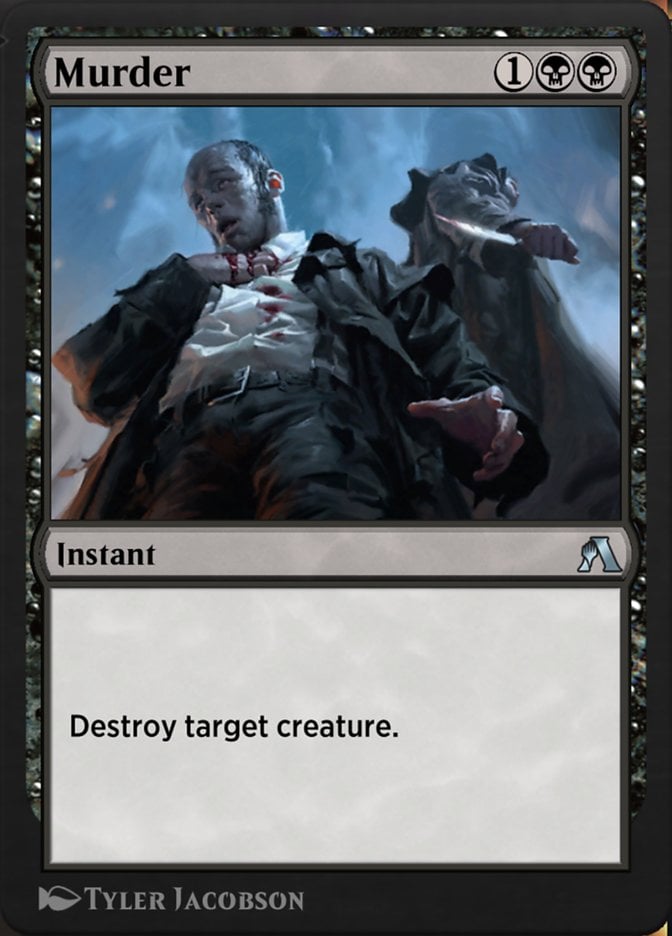
Spot removal is worse in multiplayer because you just can’t kill everything important your opponents play. Murder is there to answer fliers, slow down annoying commanders, and control the pace of the game, but you won’t be consistently 1-for-1ing three players. Conversely, sweepers are even better than they usually are in Limited. You’ll have a lot of time to soak value out of cards, and mass removal is a nightmare for go-wide archetypes like elves and tokens. I still want some spot removal in every Commander deck, but telling the pod “I have five Murders” shouldn’t produce the same sugar high as it does in a normal draft.
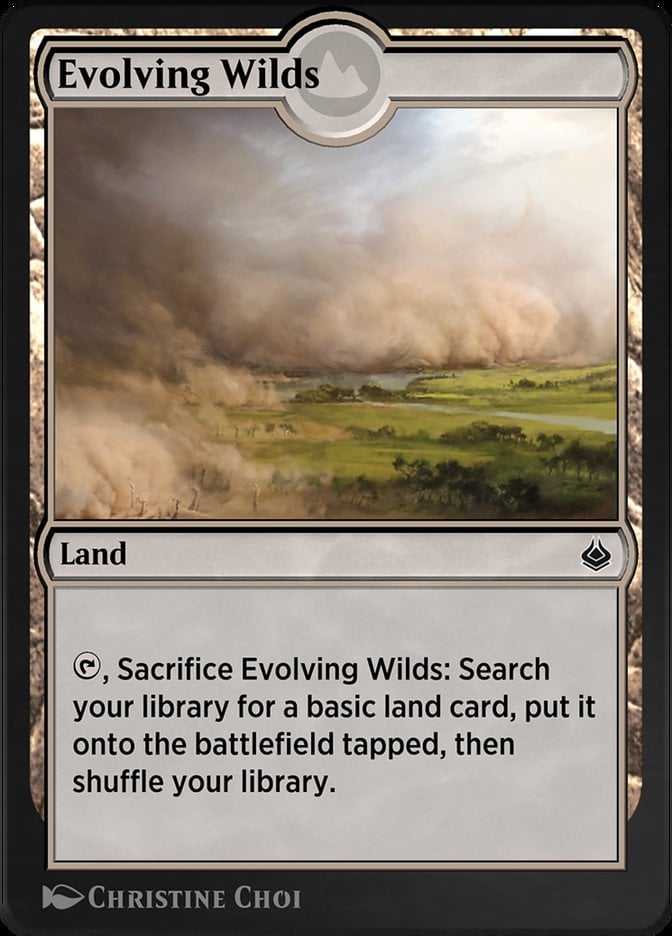
Another class of card that gets weaker in Commander Draft is mana fixing. Since you can’t splash bombs, you’ll only want to prioritize fixing when in 3C. Players who are just playing 2-colors (i.e., most players) should not. I’ll play a couple Evolving Wilds if I can get them, but even curve filler is a higher priority.
Bombs and value are essential if you can grab them! This is a casual multiplayer format where games tend to drag on forever. You’ll want tons of card advantage to weather spot removal, sweepers, and combat trades while building towards some kind of win condition or value plan based on your commander. If you can’t find any real bombs, big dumb fliers are the next best thing.
Commanding Conclusion
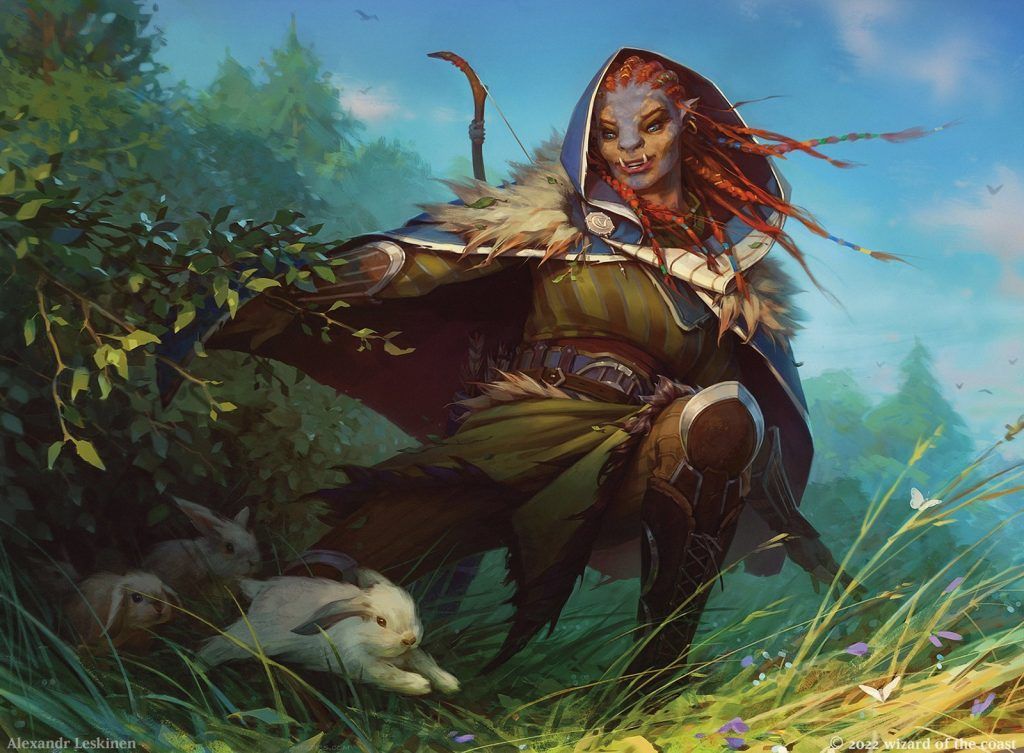
Cadira, Caller of the Small | Illustration by Alexandr Leskinen
Hopefully you enjoyed this read and learned a bit more about Commander drafting! Are you looking forward to drafting Commander Masters?
For now, focus on staying in archetypes, opening sweet cards, and having a good time! These Commander sets are a rare treat that combines the great gameplay of Draft with a more casual feel, so relax your inner Spike a bit and get some games in. And feel free to let me know how your Commander Masters Drafts go in the comments below or over on the Draftsim Twitter.
Until next time, may your pod always focus someone else!
Follow Draftsim for awesome articles and set updates: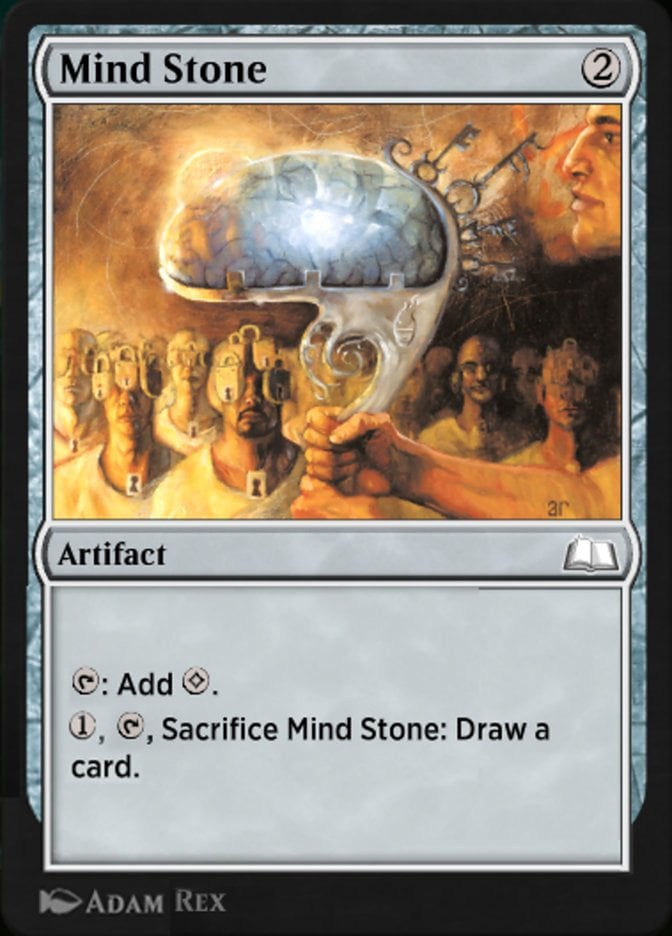
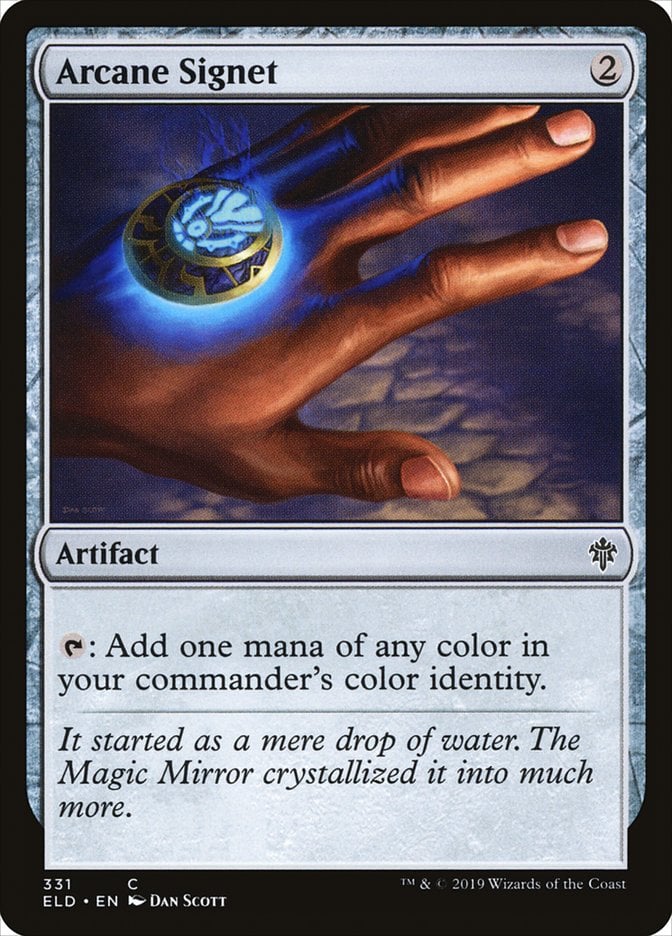
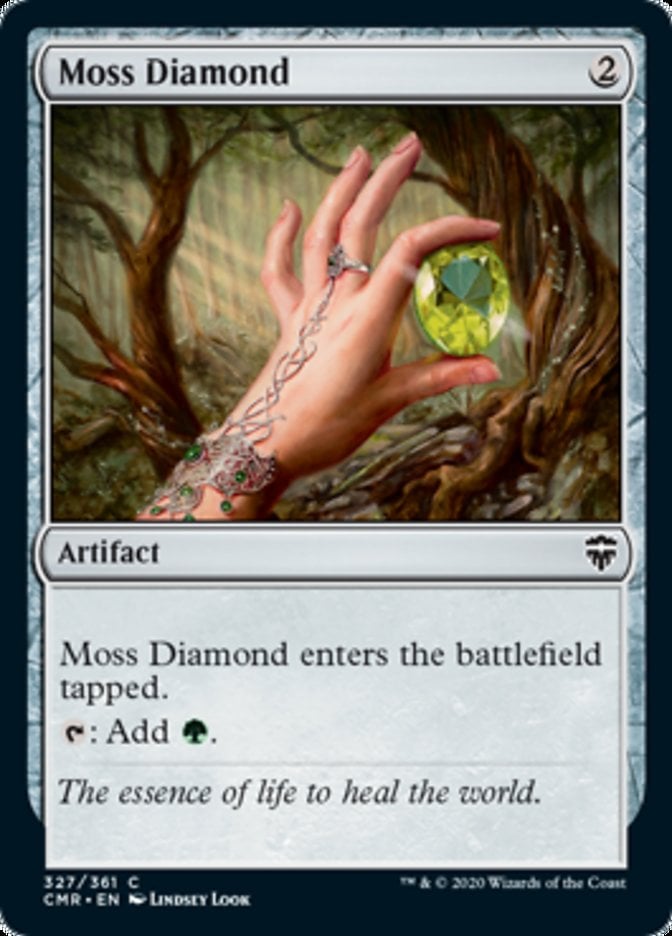
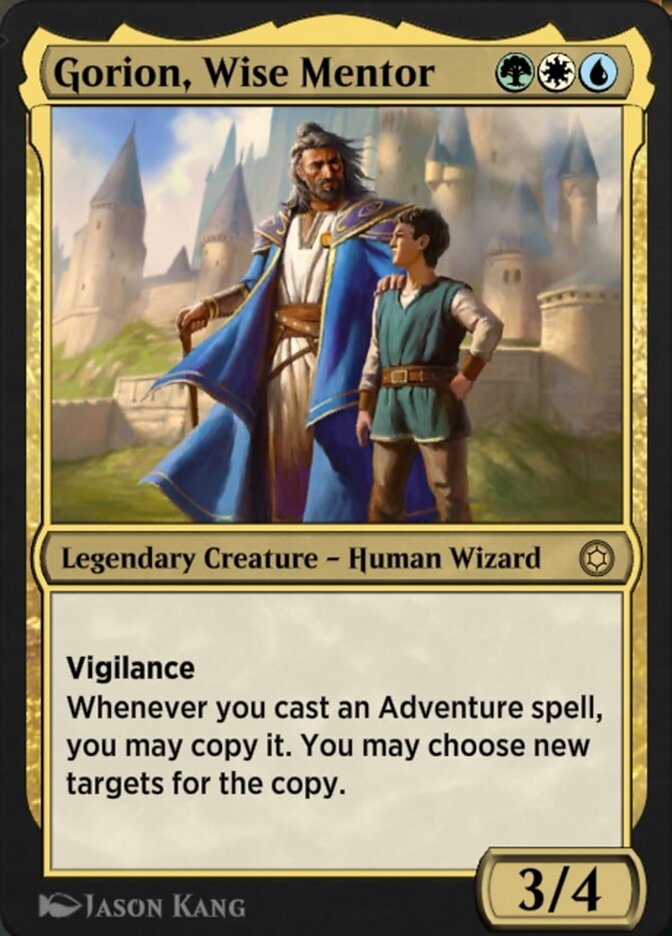
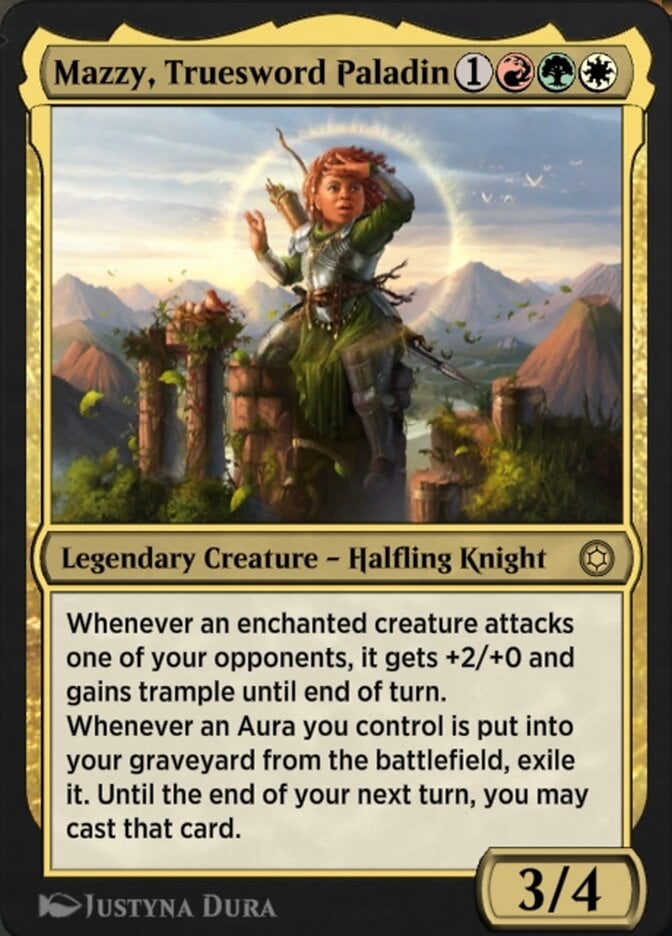
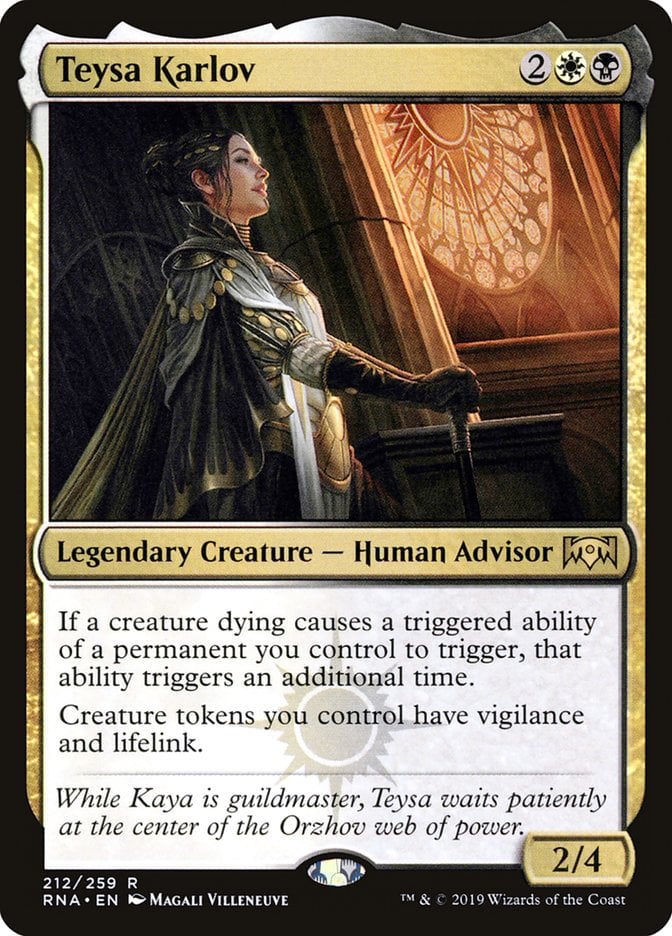
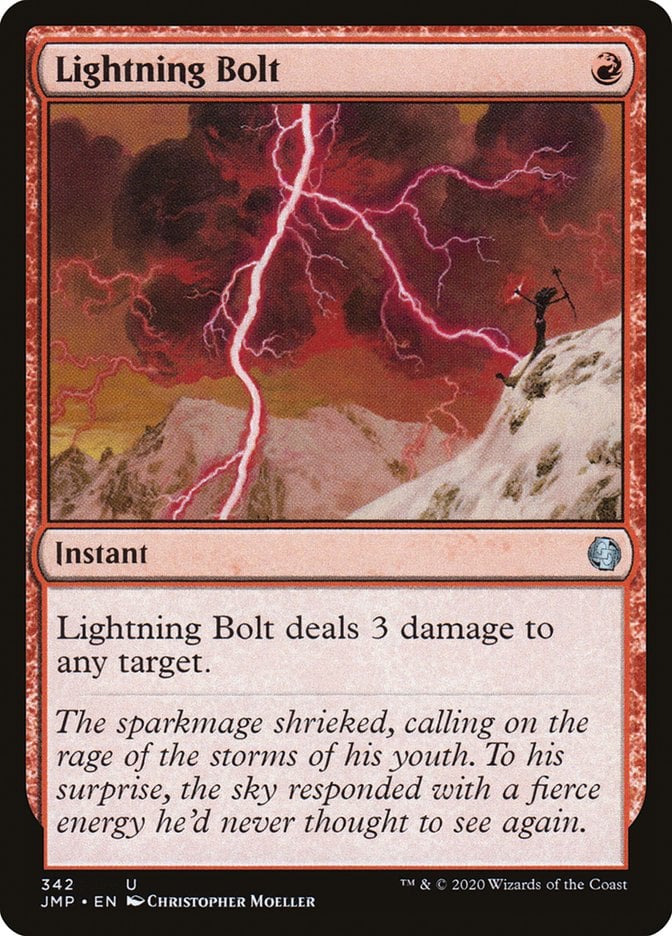

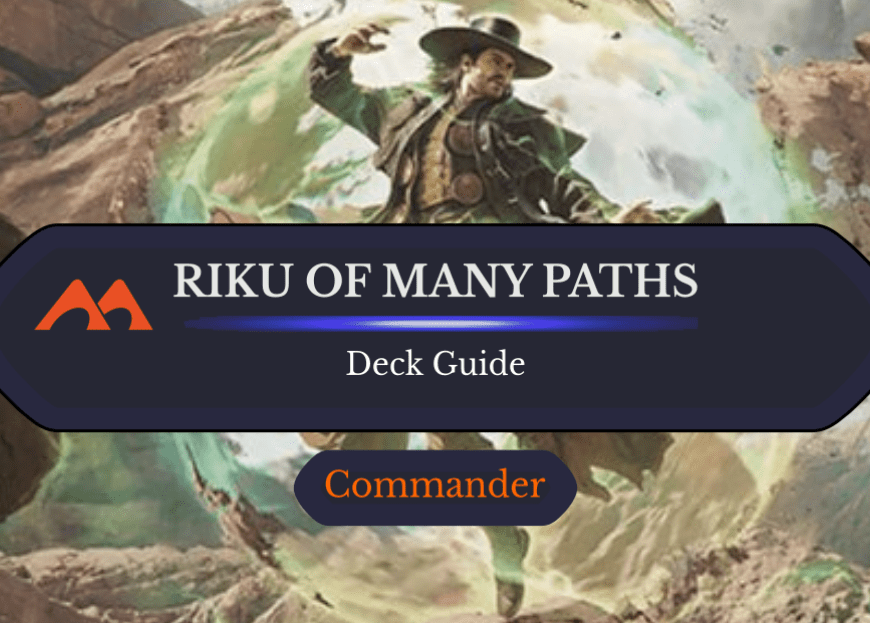
Add Comment